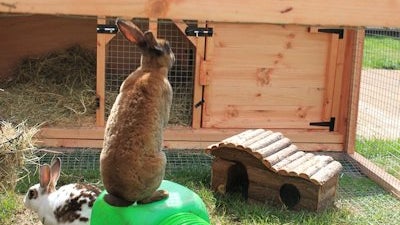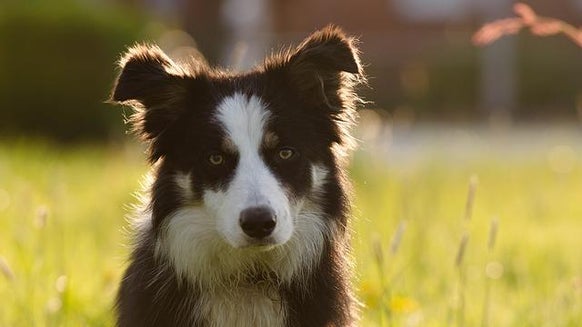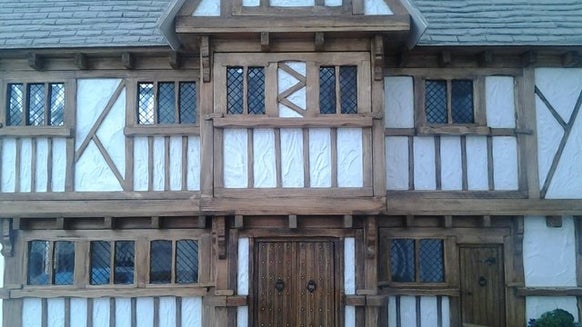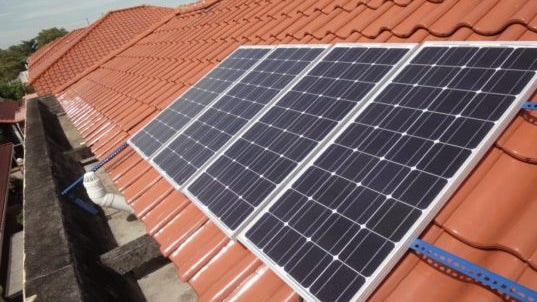Tortoise Breed List and Care Guide
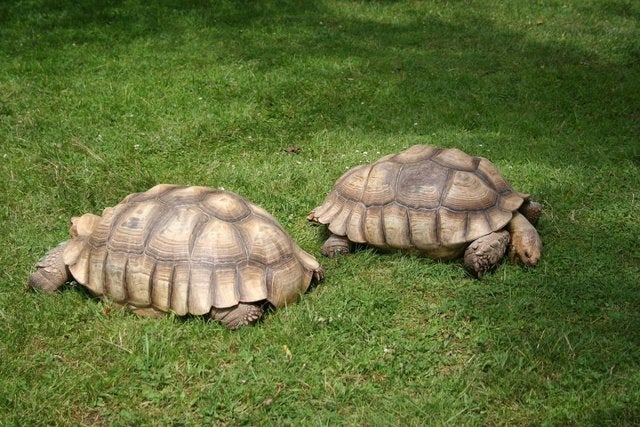
Turtles and tortoises are all part of the same species order, Testudines - a unique group of reptiles with a shell. Tortoises (Testudinidae) are land living turtles that live in warm climates across the globe and there are around 40-50 different species of tortoise! Tortoise species originate from a vast range of different environments from the wet warmth of the rainforest, to the dry heat of the desert. Do you know where the species of your tortoise originates from?
Understanding the physiology and life cycle of any pet you own is so important as this will dictate how you should care for them, what you should feed them, and how long they should live for when cared for well. Each tortoise species is unique, and will require varying environments and diets dependent on their origin: some hibernate, others do not; some require large outdoor enclosures as well as indoor, whereas some will need highly regulated indoor enclosures; some like to burrow, others do not; some make socialable pets, others are shy and stress easily; fruit is the bulk of the diet for some, other species suffer gut problems if they eat fruit; and the list of differences can go on!
Below is brief overview to demonstrate the differences between just some of the popular tortoise species - you can access more detailed information about these species, and more, via the links at the bottom of this article. For anyone thinking of buying a tortoise, you MUST research the species thoroughly beforehand to ensure you can provide the environment and care that it needs.

Tortoise Breed List
Horsfield's Tortoise (or Russian Tortoise) - Testudo Horsfieldii
Protection: Annex B species Environment: This is Preloved's most popular pet tortoise. They originate from desert habitats in Central Asia so need dry, hot conditions (when not hibernating). Vivariums are not advised - tortoise tables make good indoor enclosures. You can also house this species outdoors in the summer months when it is warm and dry enough - check out theTortoise Trust for some outdoor enclosure ideas! Water must be provided at all times. Hibernation: Will hibernate for most of the year Size: Up to 25cm in length, with femailes growing slightly larger than males Life expectancy: About 75 years Diet: 100% herbivore feeding mainly on grasses, leafy greens and flowers (you can learn more about which plants and flowers you should feed your tortoise via the link at the bottom of this article). Avoid wet food such as lettuce and fruit. Calcium supplement is required within their diet - a cuttlefish bone is a good way to encourage calcium into their diets, with keeping their "beaks" in good condition.
Hermann's Tortoise - Testudo Hermanni
Protection: Annex A species Environment: Found in grasslands and meadows in Southern Europe. These are typically confident in nature and therefore make popular pets. They like to climb and burrow so require space to explore safely. They also enjoy having a choice of microclimates, so it is best to provide them with warmer and cooler areas, but being from the Mediterranean, their enclosure shouldn't get too cool. Hibernation: Will hibernate regardless of their condition Size: Up to 11 inches in length Life expectancy: About 75 years Diet: This species is primarily a herbivore but will enjoy the odd slug or snail - the bulk of their diet should be green leafy plants, weeds and flowers. Protein should be avoided for this species, and you should give them supplementary calcium and phosphorous to help them maintain strong shells.
Egyptian Tortoise - Testudo Kleinmanni
Protection: Annex A species Environment: A desert tortoise found near the coast of Egypt, Negev, Israel, Cyrenaica and Libya. The most tolerate tortoise in the world to very arid conditions, and it originates from a sandy and slightly rocky environment. A tortoise table is recommended for this species, with a sandy soil substrate as they don't do well when not kept in regulated indoor conditions as they require constant warmth. This species is shy so you will need to provide ample places to hide away. This is the most endangered tortoise species in the world. Hibernation: Do not hibernate, but will slow during hot dry spells in the wild Size: Up to 128mm in length - this the world's smallest tortoise species! Females tend to be larger than males. Life expectancy: Can live up to 50+ years Diet: This species is 100% herbivore eating a high fibre, low protein diet of plants and flowers. Will require calcium and D3 supplements. Should not be given meat or fruit.
Marginated Tortoise - Testudo Marginata
Protection: Annex A species Environment: A hardy species found in hill and mountain areas in Greece. They will tolerate the UK climate in the summer months, enjoying outside space, but you should always give them access to an indoor greenhouse. These are active tortoises who will enjoy a varied habitat with rocks to climbs and logs to hide under. Hibernation: Will hibernate through winter Size: Up to 14 inches in length Life expectancy: Can live up to 100 years Diet: 100% herbivore and requires a high fibre, high calcium and low protein diet. The bulk of their diet should consist of edible weeds and flowers with access to grass for grazing. Some salad greens can be offered, but only in moderation.
Radiated Tortoise - Astrachelys Radiata
Protection: Annex A species Environment: Found in coastal scrub land in Southwestern Madagascar so originate from a warm humid environment with seasonal rain. This is a hardy species that will require a large space as it enjoys to roam with a choice of warm basking areas and slightly cooler areas, and access to water and mud to wallow in. Hibernation: Do not hibernate Size: Up to 16 inches in length Life expectancy: Can live to over 100 years Diet: 100% herbivore feeding primarily on grasses, fruit and succulent plants. They should never be given protein and like most tortoises, calcium supplements should be given.
Sulcata (African Spurred) Tortoise (pictured above) -Geochelone Sulcata
Protection: Annex B species Environment: A sub-Saharan species so they do not tolerate damp cold conditions, and require large strong enclosures due their large size - access to outside enclosures is highly recommended. Regular access to water for soaking is also required. Hibernation: Does not hibernate Size: Can grow over 80cm in length - this is third largest tortoise in the world! Life expectancy: Up to 100 years on average, but can live longer. Diet: 100% herbivore. Sulcata tortoises require a high fibre diet feeding mostly on grasses, hibiscus, clover and prickly pear pads. Fruit, and soft wet foods (including lettuce) should only ever be given as a rare treat as this can upset their gut. Calcium supplements is also important to support healthy growth.
Leopard Tortoise - Stigmochelys Pardalis
Protection: Annex B species Environment: South African species that does not tolerate damp or cold conditions, and requires large strong enclosure due it's large size. This species originates from thorny grassland habitats. Regular access to water for soaking is also required. Hibernation: Do not hibernate Size: Can grow over 60cm long - males can grow larger than females. Life expectancy: Up to 50 years in captivity Diet: 100% Herbivore. Leopard tortoises require a high coarse fibre diet feeding mostly on grasses, succulents, thistles and prickly pear pads. Fruit, and soft wet foods (including lettuce) should only ever be given as a rare treat as this can upset their gut. Calcium supplements is also important to support healthy growth.
Indian Star Tortoise - Geochelone Elegans
Protection: Annex B species Environment: They are from the dry grassland habitats in the Indian sub continent, so do not tolerate damp cool conditions, but do however enjoy occasional warm rain. Daily access to sunlight is essential, along with access to shade. If this is not possible then UV lighting or D3 supplement must be provided. Regular access to water for soaking is also required. Indian Star tortoises are highly vulnerable to disease so they should not be kept with other species. Hibernation: Does not hibernate Size: Females can grow up to 15 inches, and males up to 8 inches. Life expectancy: Up to 80 years Diet: 100% herbivore. Indian Star tortoises require a high coarse fibre diet feeding mostly on grasses, succulents, thistles and prickly pear pads. High protein food such as beans should be avoided as it can lead to excessive growth related problems. Calcium supplement is critical.
Spur-thighed Tortoise -Testudo Gracea Gracea
Protection: Annex A species Environment: Originate from semi-arid scrub land and Mediterranean forests that have seasonal vegetation in North Africa, Spain and the Balearic Islands. Requires large outdoor and indoor enclosures and should not live in a vivarium. Regular access to water for soaking is also required. These tortoises are highly vulnerable to disease so they should not be kept with other species. Diseases include "runny nose" problems which are extremely difficult to cure. Hibernation: Will hibernate if healthy Size: Up to 20cm in length Life expectancy: Can surpass 100 years Diet: 100% herbivore. Indian Star tortoises require a high coarse fibre diet feeding mostly on grasses, succulents, thistles and prickly pear pads. High protein and high fat should not be given to this species under any circumstance as it can lead to renal and excessive growth related problems. Calcium supplement is critical.
Elongate Tortoise - Indotestudo Elongata
Protection: Annex B species Environment: An Asiatic tropical species so requires varying levels of humidity and moist substrate within it's environment so it best suited to living in a large terrarium. This breed does not enjoy direct sunlight and is quite shy, being most active at dawn and dusk. Will require a bathing pool. Hibernation: Does not hibernate Size: Up to 12 inches in length Life expectancy: More than 20 years Diet: This species is omnivorous enjoying invertebrates such as snails, slugs and worms, as well as fruit and vegetables. This species of tortoise requires an intake of protein, but wet dog or cat food is not appropriate. However low fat animal protein such as dry cat pellets with added vitamins supplement a tortoise's diet quite well.
Travencore Tortoise - Indotestudo Forsteni
Protection: Annex B species Environment: An Asiatic tropical species so requires varying levels of humidity and moist substrate within it's environment so it best suited to living in a large terrarium, although an indoor pen with added humidity is a better long term option. Regular spraying with slightly warm water can be beneficial to its health. This species does not enjoy direct sunlight and is quite shy, being most active at dawn and dusk. Will require a bathing pool. Hibernation: Does not hibernate Size: Up to 13 inches in length Life expectancy: More than 30 years Diet: Predominately vegetarian eating fruit and vegetables, but will occasionally eat invertebrates. This species of tortoise requires an intake of protein, but wet dog or cat food is not appropriate. However low fat animal protein such as dry cat pellets with added vitamins supplement a tortoises diet quite well. Waxworms can be good as a treat.
Hinge-back Tortoises - Kinixys Homeana, Kinixys Belliana, Kinixys Erosa
Protection: Annex B species Environment: A tropical species, so they require high levels of humidity, however Kinixys belliana is able to tolerate slightly drier conditions. They dislike bright or direct sunlight. These species of tortoises benefit from occasional spraying and need constant access to a bathing pool. They are a secretive species, only active at dawn and dusk. Hibernation: Does not hibernate Size: Up to 10 inches in length Life expectancy: Up to over 25 years Diet: Omnivorous diet, enjoying snails, slugs and millipedes in the wild, and eat fruit, grasses and plants. This species can benefit from occasional small quantities of wet dog food to increase their protein intake. Live food such as crickets, snails and earthworms should be provided at least once a week. This species is highly susceptible to worms, and should be checked regularly and not kept with other species.
Spider Tortoises - Pyxis (genus)
Protection: Annex B species Environment: This group of tortoises originate from Madagascar so require high humidity and high temperature environments. They are a very sensitive species, are most active in the mornings and don't require as much space as other species - however they do enjoy a thick amount of substrate to dig around in. Constant access to a bathing pool is required. Hibernation: Does not hibernate Size: Up to 6 inches in length Life expectancy: Up to over 50 years Diet: 100% herbivore eating most types of fruit, vegetables and assorted greens. As they are opportunistic eaters in the wild, you should make a wide range of foods available at all times.
Further Reading
Plant database by the Tortoise Table - learn more about the plants you should be feeding your tortoise. Tortoise Club - welfare, rehoming, education and support Tortoise Trust Care Sheets for more detailed information including enclosure temperatures and humidity. Hibernation tips and hibernation information General tortoise species information can be found on reptiles magazine




